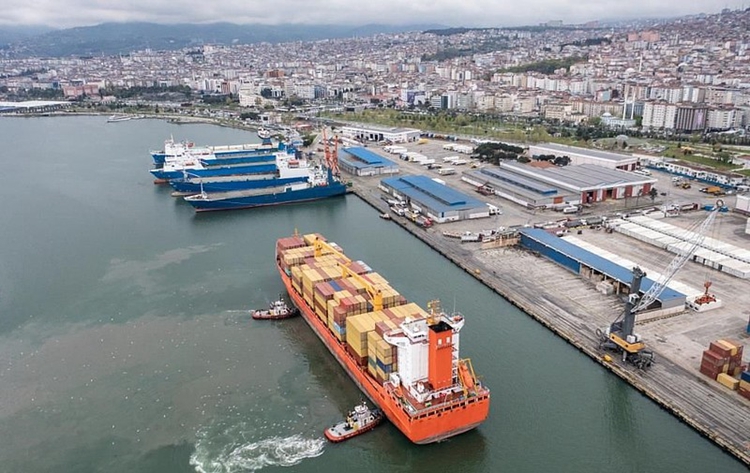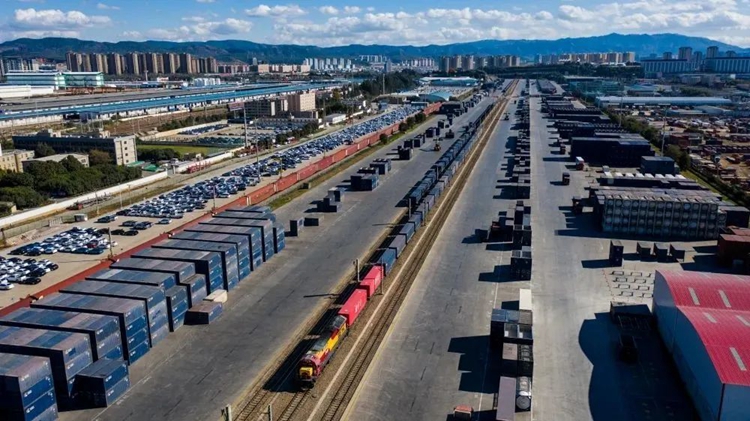The Malaysian government has formulated a short- and long-term strategy aimed at strengthening the competitiveness of the country's major ports, namely Port Klang and Tanjung Parapas, according to a recent report in the British media. According to the report, Malaysia's Transport Minister Lu Zhaofu said the strategy covers increasing port capacity, improving efficiency and productivity, and transitioning to low-carbon green ports.
In recent years, Malaysia has made great efforts to develop its port economy by expanding its ports, upgrading port digitization and establishing free trade zones, among many other initiatives, and is committed to becoming a logistics hub in Southeast Asia.
Multi-measures to enhance port throughput capacity
The Nihon Keizai Shimbun recently reported that Westports Holdings Group, the operator of Malaysia's largest port, Port Klang, will invest about $8.3 billion to double the container throughput capacity of Port Klang from the current 14 million TEUs to 27 million TEUs per year. In addition, Tanjung Parapas Port, the second largest cargo port in southern Malaysia, also has expansion plans.
According to the report, Port Klang is the second largest port in Southeast Asia after the Port of Singapore in terms of containerized cargo throughput and ranks 13th in the world. In addition to goods from neighboring regions transiting here, Port Klang is also a hub port for cargo transshipment between East Asia, Europe, the Middle East and other regions. With the continuous expansion of Port Klang, Westports Holdings will increase the number of container terminals used for loading and unloading cargo from the current 9 to 17.

In recent years, the Malaysian government has been actively expanding the port while also vigorously promoting port digitalization and intelligent construction. According to Malaysian media reports, Malaysia's first artificially intelligent container port will be built in Port Dickson, the only seaport in Negeri Sembilan. Artificial intelligence technology will be applied to the port's ship entry and exit registration, ship movement scheduling and tracking of maritime operations around the port, helping the port's maritime and freight service chain operate efficiently.
In addition, the Kuala Lumpur International Port in Malaysia will also adopt advanced technologies such as green energy, intelligent logistics systems and real-time tracking to optimize operational efficiency.
Leveraging strengths to drive overall economic development
The Global Logistics Performance Index 2023 report released by the World Bank shows that Malaysia jumped 15 places in the Global Logistics Performance Index 2023 ranking, ranking second among ASEAN countries after Singapore.
"Malaysia is strategically located with the Strait of Malacca to the west, a well-developed maritime network and numerous ports to connect to the rest of the world." Renmin University of China School of International Relations Associate Professor, Assistant Director of the Regional Institute of Country Studies JI Xianbai said in an interview with this newspaper, in recent years, Malaysia to strengthen the port construction mainly to take "three-step" strategy: first, the expansion of existing ports, increase the capacity of the cargo operation center; second, to promote the port of intelligence, digitalization, upgrading facilities, improve operational efficiency; third, to promote the port of intelligence, digitalization, upgrading facilities, improve operational efficiency. Second, promote port intelligence, digitalization, upgrading facilities, improve operational efficiency; third, relying on major ports, the establishment of industrial parks, special economic zones and free trade zones, to attract external investment, and promote local industrial and economic development. "The Malaysian government attaches great importance to regional connectivity and is actively promoting port upgrades and improving port operational efficiency to attract more international shipping and logistics companies." JI Xianbai said.
Ouyang Hanhua, Chairman of Port Klang Authority of Malaysia, introduced that Malaysia's import and export trade mainly relies on maritime transportation. From the percentage point of view, in Malaysia's logistics and transportation, air and land transportation accounted for only 10%, and 90% by sea. The development of port economy, strengthen the development of Malaysia's logistics industry, is to promote the overall economic development of Malaysia's important initiatives.
As the initiative of "One Belt, One Road" goes deeper and deeper, China and Malaysia have deepened cooperation in ports to further enhance the level of port infrastructure construction and operation in Malaysia. At present, China and Malaysia have formed a pattern of "One Belt, One Road" in the eastern part of China-Malaysia-China Kuantan Industrial Park, Kuantan Port, and Port Klang in the western part of the country, which is connected by the East Coast Railway. .

JI Xianbai analyzed that the construction of the "Belt and Road" initiative for Malaysia to give full play to the advantages of location to create opportunities. At the same time, Malaysia to promote the construction of ports can effectively enhance the country's economic vitality, so that it plays a more important role in connecting the global market.
Sea-rail intermodal transportation, the hub position continues to highlight
In 2023, COSCO Shipping Container Lines (Malaysia) Sdn Bhd signed an agreement with Malayan Railway to start sea-rail intermodal transportation cooperation. Lu Zhaofu said, Malaysia has high-quality port resources, maritime cargo ashore through the railroad system to the north can be transported to Thailand, Laos, China, through the China-European liner can reach Europe. Sea-rail intermodal transportation has great potential and looks forward to seeing greater development in this regard.
"Thanks to its own location advantages as well as China and Malaysia continue to promote high-quality co-construction of 'One Belt, One Road', Malaysia's position as a logistics hub in Southeast Asia will be further emphasized." JI Xianbai said.
JI Xianbai said, it is worth noting that in the future, there is uncertainty in the global economy as well as geopolitical situation tensions and other factors or will bring certain risks to the global logistics and transportation industry, will also make Malaysia in the process of creating a logistics hub in Southeast Asia faces challenges. "Next, Malaysia can focus on enhancing the bargaining power with major international shipping companies and optimizing the distribution of resources between major domestic ports." JI Xianbai said.

